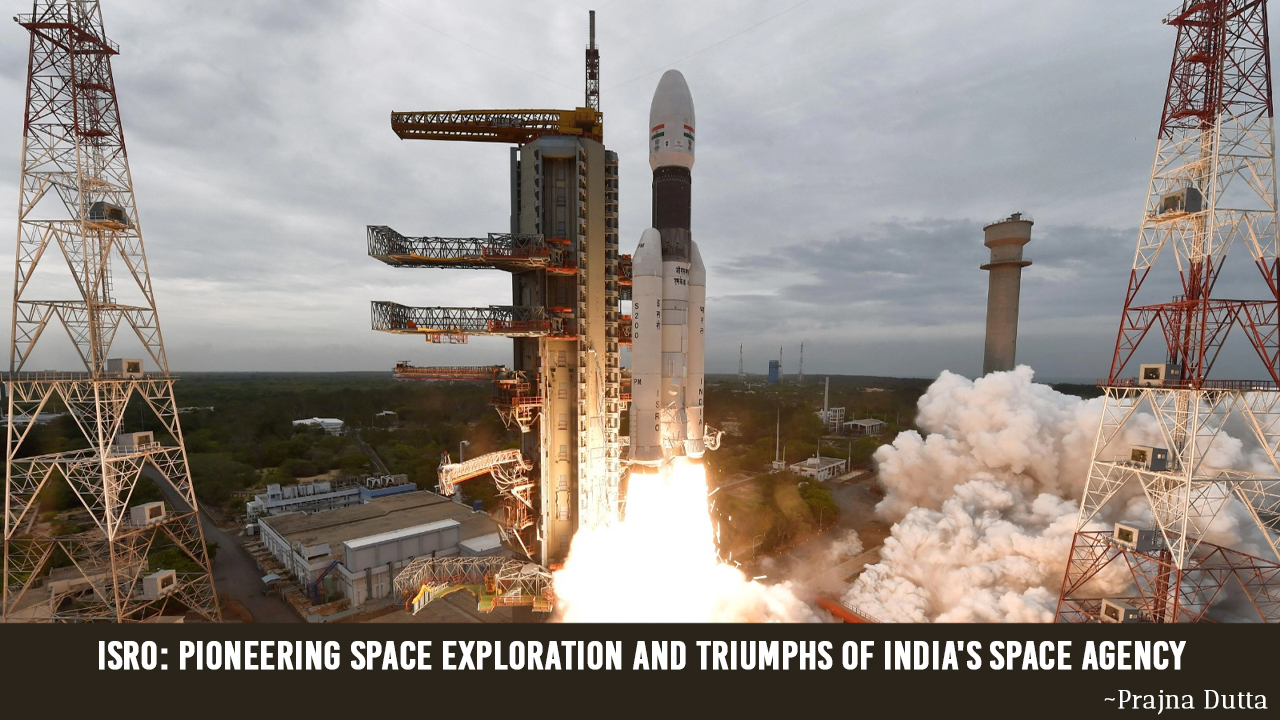Introduction:
The Indian Space Research Organisation (ISRO) stands as a shining example of India's remarkable achievements in space exploration. Since its establishment in 1969, ISRO has made significant strides in the field of space science and technology, placing India among the elite group of nations with space capabilities. With a series of groundbreaking missions and technological innovations, ISRO has consistently demonstrated its commitment to advancing space research, satellite deployment, and interplanetary exploration.
1. A Glimpse into ISRO's Journey:
ISRO's journey began with humble beginnings, fueled by the vision of Dr. Vikram Sarabhai, often referred to as the "Father of the Indian Space Program." Since its inception, the organization has evolved from launching sounding rockets to successfully deploying satellites, conducting lunar and planetary missions, and developing its own launch vehicles.
2. Indigenous Satellite Launch Capability:
One of ISRO's crowning achievements is its indigenous satellite launch capability. The Polar Satellite Launch Vehicle (PSLV) and the Geosynchronous Satellite Launch Vehicle (GSLV) have played a pivotal role in catapulting India into the global space arena. These launch vehicles have placed numerous domestic and international satellites into orbit, cementing ISRO's reputation as a reliable and cost-effective launch service provider.
3. Mangalyaan: India's Mars Orbiter Mission:
In 2013, ISRO achieved a historic milestone by successfully launching the Mars Orbiter Mission, popularly known as Mangalyaan. This landmark mission made India the first Asian country to reach Mars and the fourth space agency globally to accomplish this feat. Mangalyaan not only showcased India's technological prowess but also demonstrated ISRO's ability to achieve significant scientific objectives within constrained budgets.
4. Chandrayaan: India's Lunar Exploration Missions:
ISRO's Chandrayaan missions have been instrumental in advancing lunar exploration and expanding our understanding of Earth's celestial neighbor. Chandrayaan-1, launched in 2008, discovered water molecules on the moon's surface and provided valuable insights into its geological characteristics. Chandrayaan-2, launched in 2019, aimed to land a rover near the moon's south pole and, although the landing didn't go as planned, it was a testament to ISRO's ambitious goals and determination.
5. Navigation System: The Indian Regional Navigation Satellite System (IRNSS):
Recognizing the importance of a reliable navigation system, ISRO developed the Indian Regional Navigation Satellite System (IRNSS). Renamed as NavIC (Navigation with Indian Constellation), it consists of a constellation of satellites that provide accurate positioning and timing services over the Indian subcontinent. NavIC enhances navigation in various sectors, including transportation, fisheries, disaster management, and location-based services.
6. Social and Developmental Initiatives:
ISRO's triumphs extend beyond space exploration. The organization has actively contributed to societal development through its satellite applications. Telemedicine, tele-education, weather forecasting, agricultural monitoring, and disaster management are some areas where ISRO's satellite-based services have made a significant impact, particularly in rural and remote regions of India.
7. Future Endeavors:
ISRO continues to push the boundaries of space exploration. The ambitious Gaganyaan mission aims to send Indian astronauts to space, marking India's entry into crewed space exploration. Additionally, ISRO plans to launch the Aditya-L1 mission, which aims to study the Sun and its corona, providing valuable insights into solar dynamics and space weather. ISRO also has plans for interplanetary missions, including a proposed mission to Venus.
8. International Collaborations:
ISRO actively engages in international collaborations, fostering cooperation and knowledge-sharing with space agencies worldwide. Collaborative efforts have included joint missions, satellite launches for other countries, and sharing of scientific data and expertise. These collaborations not only enhance India's capabilities but also contribute to global advancements in space research and exploration.
9. Cost-effectiveness and Efficiency:
One of the standout qualities of ISRO's triumphs is its ability to achieve remarkable feats on a relatively modest budget. ISRO's cost-effective approach has earned it widespread recognition and admiration. By developing indigenous technologies, utilizing innovative methods, and optimizing available resources, ISRO has demonstrated that groundbreaking space missions need not be prohibitively expensive.
10. Inspiring the Nation:
ISRO's achievements have instilled a sense of national pride and inspired generations of aspiring scientists and engineers in India. The organization's success stories have motivated young minds to pursue careers in science, technology, engineering, and mathematics (STEM), contributing to the growth of India's scientific community and fostering innovation across various sectors.
Conclusion:
ISRO's triumphs in space exploration and technology have placed India on the global map of space research and have showcased the nation's capabilities in pushing the boundaries of scientific discovery. From launching satellites and lunar missions to undertaking interplanetary endeavors, ISRO has consistently demonstrated its commitment to advancing space science and technology. With its cost-effective approach, societal contributions, and inspiring achievements, ISRO continues to shape the future of space exploration while inspiring generations to dream big and reach for the stars.

Comments